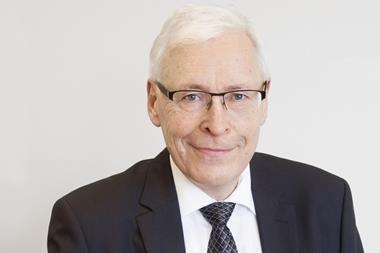Developments in the past year were very encouraging. The data for the year 2000 gives the following picture of the Pensionskassen market in Austria:
q assets administered by Pensionskassen in Austria in 2000 were ATS110bn (e8bn), an increase of 9% compared to the year 1999;
q some 284,000 beneficiaries are covered by a Pensionskassen solution. This is an increase of 23% compared to one year ago; q the number of pensioners receiving a supplementary occupational pension has risen by 12% and is now a total of 31,300;
q pension payments are ATS2.8bn;
q 7,126 companies are covered by a Pensionskassen contract, this represents an increase of 26% compared to 1999; and
q contribution payments to Pensionskassen were ATS9.2bn in 2000.
Overview
As in most other countries in Europe, the three-pillar model is also the basis for retirement provision in Austria. The main emphasis until now was on the first pillar, the public retirement provision with its pay-as-you-go character.
This pillar still provides fairly generous pensions, particularly for people with lower level active income (average pension in December 2000 was e882.61), but it is under pressure because of the increasing cost. Total expenses of the public pension insurance in December 2000 were e21,750.1m, an increase of 55.9% compared to 10 years ago. This cannot be covered by the contribution payments any longer, but increasingly has to be financed by tax.
In 2000 a pension reform in the first pillar took place which had the purpose of raising the access age for retirement. But further steps will be necessary to secure the public pension system for the main challenges of the 21st century, such as dramatic demographic changes.
The supplementary pension systems, pillars two and three, will become of increasing importance. That is already recognised by the politicians. The current government, inaugurated in February 2000, promised to put more emphasis on occupational retirement provision.
Up to the end of the 1980s, occupational pension schemes were almost completely financed through book reserves. The taxation of these provisions were very unfavourable. Consequently, occupational pension provision came to a complete standstill.
After protracted political discussions ,with the active participation of the social partners, new legislation became effective on 1 July 1990.
The tax treatment changed as well. Employers’ contributions of up to 10% of the whole wage costs are deductible from income tax. In case of a defined benefits scheme, only contributions are deductible which finance a pension of a maximum of up to 80% of the income. Employees’ contributions are taxable, but they are deductible as special expenses. The pension payments financed by employees’ contributions are subject to income tax.
There exist seven multi-employer
Pensionskassen and 12 single-employer Pensionskassen. In the past few years
the Pensionskassen have experienced strong growth thanks to a more attractive legal framework and an intensified political discussion with regard to future retirement provisions.
Recent developments
Civil servants may be involved in Pensionskassen contracts as well. That is why an increasing interest in occupational retirement provisions is expected from the public sector.
Further liberalisation of investment regulations took place:
q minimum investment in euro dent certificates is decreased from 40% to 35%;
q increase in maximum investment in stocks from 40% to 50%;
q limit for non-euro stocks increased from 25% to 30%;
q investment in non-euro currencies is now limited with 50%;
q limitation of investment in single stock emittents increased from 4% to 5%;
q investment in index certificates allowed;
q investment in derivative products, traded in capital investment funds only, is increased from 5% to 10%;
q single transfers of retirement benefits from book reserves of a company into a Pensionskasse is possible in case of the termination of the employment
Future developments
The amendment of the Austrian severance payment legislation should have a positive effect on the occupational retirement provisions. (Severance payments or Abfertigung are compensation payments for an employee on the termination of the employment relationship. This payment is provided by the employer.)
More and more people are attracted by the Pensionskassen solution because of a cautious and intelligent investment policy, low administrative costs and good know-how.
Further amendments and reforms of the first pillar pension system will keep a discussion with regard to supplementary retirement provision alive.
Small and medium size companies get increasingly interested in occupational retirement provisions.
There still is a huge potential for transfers from book reserves into Pensionskassen.
Occupational retirement provisions get more attention when it comes to tariff negotiations.
The planned EU directive will make further liberalisations in the investment area necessary, which will result in an additional impetus for the Pensionskassen.














No comments yet